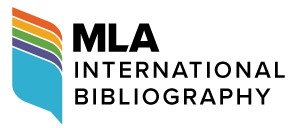Albanian Cinema Through the Fall of Communism: Silver Screens and Red Flags, by Bruce Williams. Amsterdam University Press, 2023, 246 pp.
Dina Iordanova
[PDF]
Review
Bruce Williams has remained dedicated to Albanian cinema for several decades now. For many years he was invariably the sole author whose essays on the matter would be included in edited collections related to this part of Europe. More recently, younger specialists have entered the field and scholarship has diversified with contributions by Ana Grgic, Fabio Bego, Iris Elezi, Regina Longo, Thomas Logoreci, and others. Several classic Albanian films have been digitally restored and are in the public space. It is a good moment, therefore, for Williams to organise his contributions on Albanian film into what is the first scholarly monograph on the subject.
The study follows a chronological order of five periods, from early days and pre-Second World War to what is termed a “post-Hoxha era”; the latest films discussed are made in 1990. There are only occasional references to more recent films, even if they relate to the communist period. The periodisation generally follows the specific political circumstances of Albania, and these are often determined by the country’s foreign affiliations which were often followed by a sweeping severance of contacts—the emancipation from the Ottoman Empire and Italy’s colonial designs during the Second World War was followed by tense exchanges with the Yugoslavs. There was a cordial period of fraternising with the Soviets that ended abruptly in 1961. Then a shift toward rapprochement with China that, once again, wraps up not long after Mao’s death, in 1978. In the 1980s there is also a period of nearly complete self-isolation of the country, associated with the paranoid process of “bunkerisation”. What happens in cinema is always closely related to the overall political situation.
Thus, Chapter Two talks of the honeymoon with the Soviets prior to the 1961 split (which consequently led to a rift with other Eastern European countries and to Albania’s withdrawal from the Warsaw Pact) focuses on the early careers of a group of filmmakers who were educated at VGIK in Moscow (Endri Keko, Kristaq Dhamo, Xhanfize Keko, Viktor Gjika, Dhimitër Anagnosti, and Viktor Stratobërdha). There were two high-profile early co-productions with the Soviets—the hugely popular heroic epic Luftëtari i madh i Shqipërisë Skënderbeu(The Great Warrior Skanderbeg, 1953), made with input from Georgian writers and actors and directed by Sergei Yutkevich, and the partisan action-adventure Furtuna (Fortune, 1958), directed by Kristaq Dhamo under the supervision of Yuriy Ozerov. Williams also discusses documentaries, some of which saw the involvement of Ilya Kopalin, a major figure of Soviet documentary of the wartime period. This is also the period of the creation of Shqipëria e re film studio, which eventually produced over 250 feature films.
Chapter Three is dedicated to what can be roughly described as the “Chinese” period, when the studio saw the entry of directors who studied elsewhere—like Piro Milkani, a FAMU graduate (Kujtim Çashku, who studied in Bucharest, joined in the late 1970s). Unlike with the Soviets, there are no Chinese coproductions. It is a period that sees a significant increase in the exports of Albanian films to China, though, and these are known to have enjoyed wide popularity. There is strict ideological oversight, with films about brave workers and communist-minded children featuring prominently, not least through the work of Xhanfize Keko, whose Tomka dhe shokët e tij (Tomka and His Friends, 1977) has been restored and promoted by the Albanian Cinema Project.In Chapter Four, Williams explores the films made in the later years of the studio, a period marked by Enver Hoxha’s extreme paranoia about Albania possibly being attacked by foreign powers, resulting in extreme isolation. Ballë për ballë(Face to Face, 1979), co-directed by Piro Milkani and Kujtim Çashku, is discussed at length. Indeed, this is one of the least conventional and most complex and atmospheric films to come out of Albania. Set at Pashaliman, a naval base in the South and the only Soviet base ever located in the Mediterranean, the film takes place during the Soviet-Albanian split. An atmospheric drama which somehow anticipates the deepening isolation, it raises important questions of the country’s strategic positioning and identity quest regarding Europe. Focused on the emotional side of the split with the Soviets, parting with friends and colleagues, the film is marked by the captivating emotional intensity of novelist and scriptwriter Ismail Kadare’s enchanting writing of these years.
Early in the book, Williams mounts a defence of his choice of films to discuss. I later understood why. Whilst he pays justice to many Albanian titles, he opts to talk more about some little-known films but has largely bypassed some of films that claim a well-deserved place in the Albanian canon. Thus, two classic films that have been restored and are available —Gjeneral Gramafoni (General Gramophone, Viktor Gjika, 1979) and Nëntori i dytë (Second November, 1982, Viktor Gjika) —are only mentioned in passing. Given that they are not only quite popular but also relate to important moments in Albanian history, I wish something more was said about them. This omission raises questions of “canon” in general. Many would say that scholars ought to be free to choose which films to write about rather than just cover a list of “the usual suspects”. True. My thinking here, however, is more practical and it concerns the synergy of academic planning. Books on Albanian cinema do not appear very frequently, so I believe there is an element of responsibility when scholars undertake to write one. They ought to consider what material is likely to be used for teaching Albanian cinema, see which films are available and cover them so that the text can be integrated in teaching. Along these same lines, I wish the discussion on the important role that a writer of the calibre of Ismail Kadare played for Albanian cinema was wider and deeper. After all, Kadare’s work has been adapted for the cinema on multiple occasions, not only in Albania but also abroad. His novel Gjenerali i ushtrisë së vdekur (General of the Dead Army) was the basis of two remarkable films—one made by Luciano Tovoli in Italy (Il generale dell’armata morta, 1983) and one made by Dhimitër Anagnosti in Albania (Kthimi i ushtrisë së vdekur, 1989). Again, such a discussion would be useful for those who plan to teach Albanian culture and film.
My other criticism relates to Williams’ engagement with the proverbial Balkan squabbles on national belonging. On three occasions in the book he argues in favour of the “Albanianness” of transnational figures such as the Manaki brothers, Mother Teresa, and actor Bekim Fehmiu—knowing that other nations in the region also lay claim to these famous individuals and that their direct connection to Albanian cinema is ambiguous. I would hope scholars might quit the perennial bickering on cultural appropriation alone as it feeds into inflammatory nationalism. I would prefer if we respected the supranational status these important figures currently enjoy.
References
1. Ballë për ballë[Face to Face]. Directed by Piro Milkani and Kujtim Çashku, Shqipëria e re, 1979.
2. Furtuna [Fortune]. Directed by Kristaq Dhamo, Shqipëria e re, 1958.
3. Il generale dell’armata morta [General of the Dead Army]. Directed by Luciano Tovoli, Antea Cinematografica,1983.
4. Gjeneral gramafoni [General Gramophone]. Directed by Viktor Gjika, Shqipëria e re, 1979.
5. Kadare, Ismail. Gjenerali i ushtrisë së vdekur [General of the Dead Army]. Naim Frashëri Publishing House, 1963.
6. Kthimi i ushtrisë së vdekur[The Return of the Dead Army]. Directed by Dhimitër Anagnosti, Albfilm, 1989.
7. Nëntori i dytë [Second November]. Directed by Viktor Gjika, Albfilm,1982.
8. Tomka dhe shokët e tij [Tomka and His Friends]. Directed by Xhanfize Keko, Shqipëria e re, 1977.
9. Velikiy voin Albani Skanderbeg [The Great Warrior Skanderbeg]. Directed by Sergei Yutkevich, Albfilm,1953.
Suggested Citation
Iordanova, Dina. “Albanian Cinema Through the Fall of Communism: Silver Screens and Red Flags, by Bruce Williams.” Alphaville: Journal of Film and Screen Media, no. 29–30, 2025, pp. 295–297. DOI: https://doi.org/10.33178/alpha.2930.18.
Dina Iordanova is a specialist in Balkan film. She is an Emeritus Professor of Global Cinema at the University of St Andrews in Scotland.









